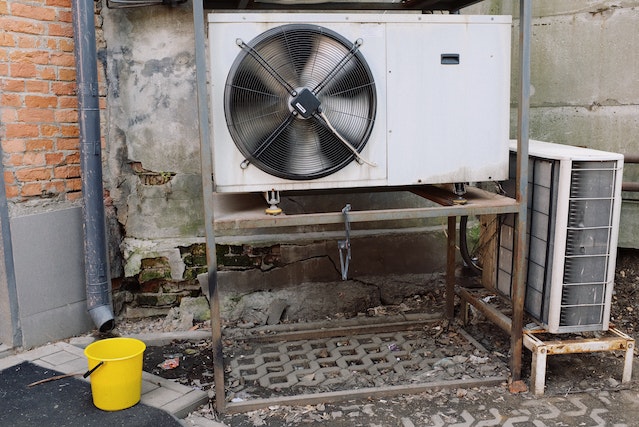
With their highly efficient designs and impressive range of capabilities, heat pumps are fast becoming a top choice in residential heating and cooling. These units can be integrated into central HVAC systems as an alternative to standard air conditioners, and as a primary or secondary source of heat. They can also be installed as ductless mini-split units that provide zoned heating and cooling. Read on to discover five important facts about heat pumps.
1. Heat Pumps Use Heat Transfer Rather Than Combustion
Oil-fired and gas-fired furnaces produce heat by combusting fuels. Unfortunately, their fuel combustion is always incomplete. This leads to the production of harmful exhaust gases that must be routed out of the home via attached venting systems. The result is fuel waste, the risk of carbon monoxide exposure, and often substantial carbon footprints for building residents.
Comparatively, heat pumps don’t need fuel to produce heat. Although heat pumps require electricity for operation, they’re able to warm building interiors up by extracting heat from the outdoor air. Some heat pumps maintain efficiency ratings as high as 300% even when outside temperatures fall as low as 4 degrees Celsius. There are also high-performance heat pumps that remain reliable sources of heat even when outside temperatures fall much lower.
2. Heat Pumps Can Work in Reverse
Despite their name, heat pumps are also effective as air conditioners. Heat pumps are consistently ranked among the most efficient options in residential cooling available. When functioning as air conditioners, they use the same heat transfer process that’s applied for heating. However, it works in reverse. Throughout their cooling cycles, heat pumps extract warm indoor air and deposit it outside.
3. You Don’t Need HVAC Air Ducts to Have a Heat Pump
Full-size heat pumps can be connected to a home’s central HVAC ductwork. However, there are also ductless, mini-split heat pumps. These are the heat pumps Canada locals are increasingly installing in their homes. This is because ductless heat pumps eliminate one of the biggest sources of energy waste in home heating systems: air ducts.
Whether leaky, structurally damaged, or uninsulated, HVAC air ducts can be responsible for as much as 25% to 40% of a heating and cooling system’s energy loss. The warm and cool air that ductless mini-splits distribute doesn’t travel at all. Without air ducts, ductless heat pumps also provide a higher quality of indoor air. The warm or cool air that a ductless heat pump’s air handlers release doesn’t pick up any dirt, pollen, dander, or other debris during distribution.
If you have an older home that never had HVAC ducting, you can use a ductless heat pump to complement or replace baseboard heaters or any other fixed heating solution that you’re using. In homes like these, ductless heat pumps are also a far more efficient alternative to outdated window air conditioners. Unlike window ACs, ductless heat pumps can be used to cool more than one room at a time, and they’re much quieter during operation.
Even homeowners with existing HVAC ductwork can get impressive benefits from ductless heat pump installation. These systems are perfect for controlling temperatures in remote areas of buildings that are either unserviced or under-serviced by central HVAC systems. For instance, if you’ve recently converted your basement or attic into a bedroom or family room, completed a new home addition, or transitioned your garage into a workspace, a ductless heat pump will create and maintain comfortable, habitable conditions even as it adds ventilation, filters the air, and regulates humidity.
4. Heat Pumps Can Help With Indoor Humidity Regulation
Much like central HVAC systems, ductless heat pumps also help with indoor humidity regulation. If your indoor air ever feels muggy, heavy, or clammy, you can run your ductless heat pump using the “DRY” mode setting. With each cycle, this unit will extract excess moisture from the air until balanced humidity levels are achieved.
Each ductless heat pump’s handler has its filter. Thus, ductless heat pumps also provide a nominal amount of indoor air quality control. Although these units cannot match the effectiveness of air purifiers, air scrubbers, or other advanced IAQ technologies, they can remove many common indoor allergens such as dust, pet hair, dander, and pollen.
5. Ductless Heat Pumps Provide Customized Comfort
Ductless heat pumps have a single outdoor unit. This is connected to individual air handlers in each zone or room of the home by refrigerant tubing. Some ductless heat pumps can accommodate as many as eight different air handlers. Each air handler has its thermostat, and each is controlled and operated independently of the others.
While central HVAC systems are designed to heat and cool homes uniformly, ductless heat pumps make it possible to selectively heat and cool individual spaces. As such, there’s no need to spend money on unoccupied areas, and no one has to be over-hot or exceedingly cold to accommodate the preferences of others.
Heat pumps and ductless mini-split heat pumps are changing the HVAC industry. These high-performing and highly efficient units eliminate the production of harmful exhaust gases by side-stepping combustion entirely. Their dual functionality allows them to moderate indoor temperatures year-round. With these and many other benefits to provide, heat pumps are fast becoming a top choice in residential heating and cooling.


